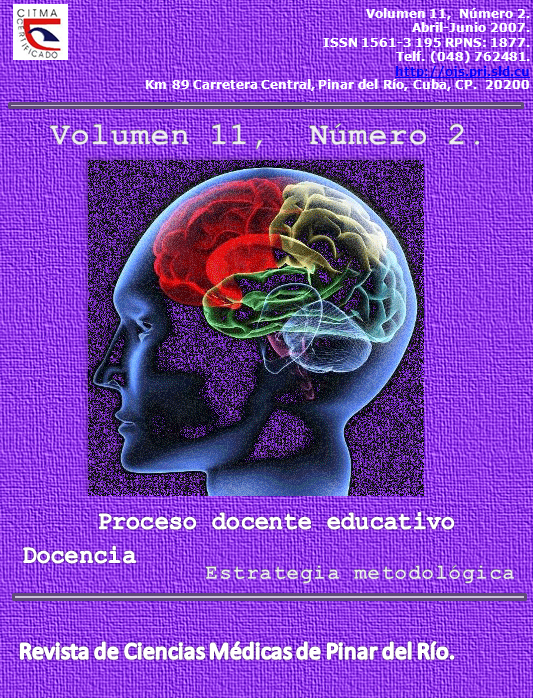Valoración del diseño curricular del programa del internado profesionalizante Assessment of the Curricular Design for the Internship Program
Abstract
Se realizó una valoración del diseño curricular del Programa del Internado profesionalizante que se imparte en el 6to año de la Carrera de Medicina en el cual se analizó el objeto de estudio de dicho programa, así como los objetivos, contenidos, métodos de enseñanza, medios de enseñanza, formas de organizar esta enseñanza y el sistema de evaluación de dicho programa. En nuestro análisis pudimos concluir que con el Diseño de Internado Profesionalizante el plan de estudios gana en pertinencia al desarrollar el último año a tiempo completo en los escenarios reales en que el egresado habrá de desempeñarse como médico General Integral Básico, permitiéndole un mayor vínculo con la práctica profesional, independencia en la actuación, responsabilidad con el trabajo y una estrecha relación con la comunidad. Todo esto se ha traducido en mejores resultados en el Examen Estatal y la opinión muy satisfactoria que sobre ellos han vertido las comunidades en las cuales han prestado sus servicios. No debemos dejar de mencionar, además, la meritoria labor que estos estudiantes han desarrollado en las funciones docentes como tutores de alumnos de años inferiores.
Palabras clave: Estudiantes de Medicina, Curriculum, Evaluación Educacional.
ABSTRACT
An assessment of the curricular design for the Internship Program taught in the 6th academic year of medical major was carried out with the purpose of analyzing the object of study , objectives, contents, teaching methods, teaching aids, organization of learning and system of evaluation. The analysis showed that with the Internship Program the syllabus gained pertinence inserting those medical students enroll in 6th (last) academic year in professional practice, having independence in their performance, achieving responsibility towards work and a close relationship with the community. The fulfillment of these activities allow better results in the State Examination, and the communities where they carry out the Internship Program express a satisfactory opinion. It is worth to mention the task these students performed in the teaching process as tutors of medical students in lower academic courses.
Key words: Medical Students, Curricular Design, Educational Evaluation.
Downloads
How to Cite
Issue
Section
License
Authors who have publications with this journal agree to the following terms: Authors will retain their copyrights and grant the journal the right of first publication of their work, which will be publication of their work, which will be simultaneously subject to the Creative Commons Attribution License (CC-BY-NC 4.0) that allows third parties to share the work as long as its author and first publication in this journal are indicated.
Authors may adopt other non-exclusive license agreements for distribution of the published version of the work (e.g.: deposit it in an institutional telematic archive or publish it in a volume). Likewise, and according to the recommendations of the Medical Sciences Editorial (ECIMED), authors must declare in each article their contribution according to the CRediT taxonomy (contributor roles). This taxonomy includes 14 roles, which can be used to represent the tasks typically performed by contributors in scientific academic production. It should be consulted in monograph) whenever initial publication in this journal is indicated. Authors are allowed and encouraged to disseminate their work through the Internet (e.g., in institutional telematic archives or on their web page) before and during the submission process, which may produce interesting exchanges and increase citations of the published work. (See The effect of open access). https://casrai.org/credit/



